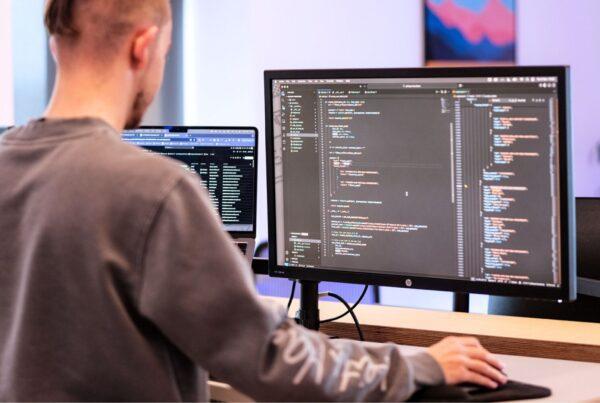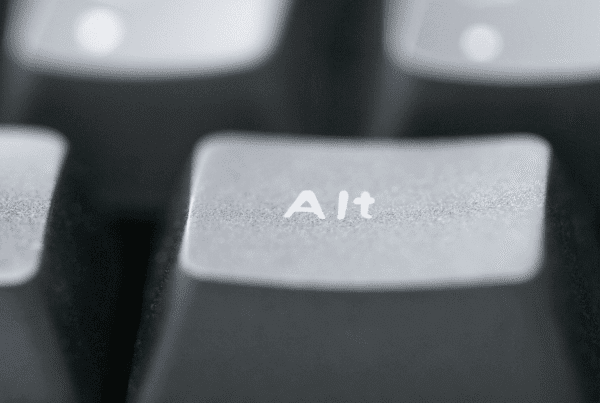![6 Web Design Trends That Have Impact [2023] 1 6 web design trends that have impact](https://solve.co.uk/wp-content/uploads/6-web-design-trends-that-have-impact.jpg)
2023 is an exciting year for digital and web design in general, with website designers embracing futurism and ditching old web design trends. We love stumbling upon shiny new design elements and how web agencies are visually pushing the boundaries of how websites should look and interact.
But which web design trends actually work to add value and convert customers? As we head into 2023, we thought we’d share the trends we’ve spotted so far and expect will continue growing in popularity in the months ahead. Our list of best web design trends for 2023 puts usability first, while looking at ways to create up-to-date websites that make a strong visual impact.
Top 6 Web Design Trends for 2023
- Minimalist website design
- Personalised website design
- Incorporate social media
- Split screen web design
- Bold and vibrant colour schemes
- Floating layers
1. Minimalist website design
Invest time planning in your content strategy to drill down the most important information. Let your content breathe with a simple layout, bold text and plenty of white space.
This one almost goes without saying, for years designers have recognised the importance of prioritising minimalist design to communicate a clear message. But in recent times, clean and uncluttered web design layouts have taken centre stage. Strip back your website design to the essentials, and consider swapping out textual content for a video or image that could communicate the idea in a more succinct way.
Not only is a minimalist website good for users and design, but it also tends to lead to lightweight, more efficient websites which lower environmental footprint. As people are becoming more aware of the environmental impact of the internet, this has become an increasing priority in web design, with the added bonus that these websites improve the user experience by being fast and responsive.
A web design trend which has come as a result of scroll culture, and ties in well with the minimalist theme, is the use of abundant whitespace and bold text. Whitespace is an important design principle, giving users a break from busy sections and information overload. It can also help draw the eye to important web design elements such as buttons, forms and headlines which bold fonts further emphasise.
![6 Web Design Trends That Have Impact [2023] 2 Raceface website screenshot](https://solve.co.uk/wp-content/uploads/web-design-trends-raceface-1024x561.jpg)
![6 Web Design Trends That Have Impact [2023] 3 Soucy website screenshot](https://solve.co.uk/wp-content/uploads/web-design-trends-soucy-1024x580.jpg)
![6 Web Design Trends That Have Impact [2023] 4 Hansholm website screenshot animated GIF](https://solve.co.uk/wp-content/uploads/whitespace-hanstholm.gif)
No longer are web designers confined to the restrictions of virtual ‘real-estate’ and trying to keep all elements within a certain screen height. Instead, they can design with a little more freedom to make sure important elements really stand out.
2. Personalised website design
Add human touches and true-to-life photography to evoke your brand’s personality.
Adding a touch of human personality to websites is becoming a popular eCommerce web design trend as designers strive to bring back brand authenticity and trust in response to the increase of AI and cookie-cutter websites. This trend aims to connect with audiences on an emotional level and has proven to be effective in building a loyal customer base.
![6 Web Design Trends That Have Impact [2023] 5 Les Snoros website screenshot](https://solve.co.uk/wp-content/uploads/web-design-trends-lessnoros.jpg)
Of course, any illustration and personal touches need to resonate with your brand and make sense for your messaging. Consider exploring this as an option, as it can help humanize a corporate web design and add a contemporary design touch. However, hand-drawn elements aren’t the only way to add personality. Invest time to source or photograph high-quality images that are perfectly tailored to your brand’s specific needs. Read our article on the importance of images in marketing to find out more about what lifestyle imagery could work for your business.
![6 Web Design Trends That Have Impact [2023] 6 Guy Sanchez website screenshot](https://solve.co.uk/wp-content/uploads/web-design-trends-guysanchez.jpg)
This web design for Guy Sanchez is a great example of how custom imagery can be showcased. The website has been purposefully designed to prioritise their photography, making sure not obscure with text, interactive elements or heavy colour overlays.
3. Incorporate social media into your website
Take a holistic approach to your digital presence by blurring the lines between your social media profile and your website.
It is likely that social media is at the heart of your digital marketing campaign, and one of the best ways to showcase this social presence of a brand is via your website.
In 2021, social media users in the UK spent 1 hour 48 mins per day scrolling through social media sites on average (Statista). All this screen time means that people gain a deep understanding of how to navigate around these social sites – they are pros! You can harness this user knowledge by tailoring your website to be more in line with how social media websites operate. We’ve been seeing a heightened use of social media elements such as emojis, chat forms, animated GIFs and infinite scrolling feeds, which customers are already well accustomed to on sites like Facebook, Instagram, TikTok and Twitter.
Not only this, but the increased use of platforms like TikTok and Instagram Reals in recent years means a lot of businesses likely have an excess of branded social video content that could be repurposed for engaging website graphics, explainers and presenting written content in different formats.
![6 Web Design Trends That Have Impact [2023] 7 6 Web Design Trends That Have Impact [2023] 1](https://solve.co.uk/wp-content/uploads/goat-mockup-600x376.png)
Another way to achieve this social media experience is by integrating your social media feeds in a more seamless way on your website. Using a premium WordPress plugin such as Instagram Feed by Elfsight allows the content of your feed to be styled to fit with the rest of your website.
4. Split screen web design trend
This trend is useful in eCommerce settings, where two product lines need an equal footing. It can also be a great design feature to layout your content.
If you have multiple top-level messages to convey, take advantage of the split screen web design trend to balance the content 50:50. We feel that this trend should be used only where completely appropriate, to ensure messages are not battling against each other. This is a particularly useful ecommerce website trend, as you might want to balance two product lines which are of equal footing e.g. menswear and womenswear.
If you have just one message to convey, a split-screen layout can still work well to structure your content. Balance imagery, patterns and textures on one side, and text, content and call-to-actions on the other.
![6 Web Design Trends That Have Impact [2023] 8 7H34 website screenshot animated GIF](https://solve.co.uk/wp-content/uploads/split-screen-trend-7h34.gif)
![6 Web Design Trends That Have Impact [2023] 9 MTG website screenshot](https://solve.co.uk/wp-content/uploads/web-design-trends-mtg-interieur.jpg)
5. Bold and Vibrant Colour Schemes
Bold, bright, and contrasting colours will be a popular trend in web design in 2023. Expect to see websites with more visually striking colour combinations. This trend is a response to the increasing demand for websites that not only look good but also stand out from the competition. By using bright and bold colours, designers can create a unique and memorable visual experience for their users. The use of contrasting colours will also help to create a sense of depth and dimension in designs, making elements pop and drawing the eye to specific areas of a page. This trend will be especially popular in the fields of fashion, art, and technology, where websites are looking for a way to showcase their products and services in a dynamic and visually appealing way.
![6 Web Design Trends That Have Impact [2023] 10 Bright website design](https://solve.co.uk/wp-content/uploads/Bright-website-design-1024x489.png)
6. Floating Layers
Overlapping elements is a web design trend we’ve been seeing over the past couple of years. It can add a real sense of depth and interactivity to your content, especially when combined with animation. This is a tricky trend to get right, and should not just be done for the sake of it. We have come across examples that can be confusing to navigate and create unnecessary clutter. But when done correctly, it can be a great way to group content and boost style points.
![6 Web Design Trends That Have Impact [2023] 11 Crusoe website screenshot](https://solve.co.uk/wp-content/uploads/Crusoe-website-floating-layers-e1675937450447-1024x489.png)
With all these top web design trends considered, it is important to do what works for your users and their specific needs. As long as you have them at the heart of your digital strategy, your website will never go out of style.
Why is it important to stay up to date with the latest web design trends?
In an increasingly competitive marketplace, it has never been more important to stay up to date with the latest web design trends. For businesses, it is important a site stays up to date as user expectations are constantly evolving, and users expect websites to have a modern, aesthetically pleasing design that is both functional and easy to use. Keeping up with the latest trends ensures that your website meets these expectations and provides a positive user experience. Not only this, but staying current with the latest trends helps to ensure that your website remains competitive in a crowded online marketplace. A website that looks outdated or does not incorporate the latest design trends is likely to be overlooked by users in favour of more modern and visually appealing websites.
As a web designer, staying up to date with the latest web design trends is crucial to the success of your projects and to your professional growth. The web design industry is constantly evolving, with new technologies, design techniques, and user expectations emerging all the time. By staying current with the latest trends, you can ensure that your designs are relevant, effective, and meet the needs of your clients and their target audiences. Additionally, staying up to date with the latest trends allows you to bring new ideas and perspectives to the table, which can help you to stand out in a competitive marketplace and win new clients.
Solve (-ing) your web design challenges
At Solve, our expert team of geeks and geekesses take web design seriously. We really pack a punch with our websites, including ongoing support, consultancy, maintenance, green hosting and all the essential website-building elements in our packages.
A beautiful new website needs to be seen! We’ll ensure your site will be viewed by the search engines and can be indexed by Google, so you can get ranking right from day one. Our unique blend of optimisation, digital marketing and web design has improved the ranking of hundreds of businesses from all over the world – some by as much as 25,000%! And you don’t just need to take our word for it, our previous customers have left us some pretty awesome reviews on Google and 90% of our clients come from recommendations.
We solve SEO problems every day. If you need a boost, get in touch to see how we can help.





